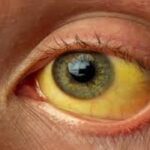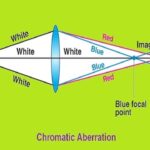Cervical Spondylosis Definition, Reason, Symptoms, Treatment & Prevention
Definition
Cervical spondylosis is a general term used to describe damage to the cervical spine. This condition is usually age-related.
When the discs (the parts that separate one vertebra from the other) become dehydrated (low fluid) and shrink, signs of disc inflammation can begin to appear. This includes a protrusion at the edge of the disc.
Cervical spondylosis is quite common and worsens with age. Most people have no complaints from this condition. However, when complaints occur, conservative treatment is often effective in overcoming them.
Cervical Spondylosis Symptom
In most people, cervical spondylosis has no signs or symptoms. However, when there are signs or symptoms, one of the most commonly observed is pain and stiffness in the neck.
Sometimes, cervical spondylosis can cause a narrowing of the space needed by the spinal nerves and nerve roots to travel through the spine to the rest of the body.
If there is pressure on the spinal cord or nerve roots, symptoms that can occur include:
• Tingling, numbness or weakness in the arms, hands, legs or feet
• Loss of coordination and difficulty walking
• Loss of bladder or bowel control
Cervical Spondylosis Reason
Cervical spondylosis is age-related. As we age, the bones and cartilage that make up the spine and neck slowly begin to change.
Changes that occur may include:
• A dehydrated disc. As individuals reach the age of 40, the discs in most individuals begin to shrink, which increases the contact between the bones that make up the spine.
• Disc herniation. Age also affects the exterior of the spinal discs. A fissure may occur, causing the disc to protrude. Sometimes, this can cause pressure on the spinal cord and nerve roots.
• Bone spurs. Degeneration of the discs can cause the spine to produce excess bone in an effort to strengthen the spine, which is known as a bone spur. Sometimes, this can put pressure on the spinal cord and nerve roots.
• Rigid ligaments. Ligaments are tissues that connect one bone to another. Ligaments in the spine can become stiffer with age, which can reduce neck flexibility.
Some of the risk factors for cervical spondylosis are:
• Age. Cervical spondylosis is a normal part of the aging process.
• Work. Jobs that involve repetitive neck movements or uncomfortable positions can place excessive pressure on the neck.
• Injury to the neck. A history of previous neck injuries can increase the risk of developing cervical spondylosis.
• Genetic factors. Family history is also a factor that is thought to be related to the occurrence of cervical spondylosis.
• Smoking. Found a relationship between smoking and increased pain in the neck.
Diagnosis
The diagnosis of cervical spondylosis can be determined from a detailed medical interview, direct physical examination, and certain supporting examinations.
A physical examination carried out by a doctor may include:
• Examination of range of motion ability in the neck
• Examination of reflexes and muscle strength to find out if there is pressure on the spinal nerves
• Observing gait for any influence of spinal cord compression on gait
Imaging examinations can produce more detailed information to support diagnosis and treatment. Doctors may recommend imaging tests as follows:
• X-ray examination of the neck. X-ray examination can show abnormalities that indicate cervical spondylosis. X-rays of the neck may also be used to rule out more serious causes of neck pain, such as a tumor, infection, or fracture.
• Computerized tomography (CT) examination. This examination can show more detailed imaging, especially of the bone.
• Magnetic resonance imaging (MRI) examination. This examination can show areas where nerves are experiencing compression.
• Myelographic examination. A dye can be injected into the spine to produce more detailed images.
The doctor may also recommend examinations to determine whether nerve signals are traveling properly in the body. Some of the checks that can be done include:
• Electromyography (EMG). This examination measures the electrical activity of the nerves when transmitting signals to the muscles, both when the muscles are contracting and at rest.
• Nerve conduction tests. This examination uses electrodes attached to the skin over the nerves to be examined. A small electrical current is applied to the nerve to measure the strength and speed of the nerve signal.
Cervical Spondylosis Treatment
Treatment for cervical spondylosis depends on the severity of the signs and symptoms experienced by the sufferer. The goal of treatment is to manage pain, help the body to carry out daily activities as usual, and prevent permanent injury to the spinal cord.
Treatment may include treatment with anti-inflammatory, anti-convulsant, or anti-pain drugs, physical therapy to stretch and strengthen the muscles in the neck and back, acupuncture to reduce pain, or surgery if conservative therapy does not reduce complaints.
Prevention
Until now there has been no effort to prevent cervical spondylosis that has proven to be fully effective. This is because the cause of cervical spondylosis is not known with certainty.










